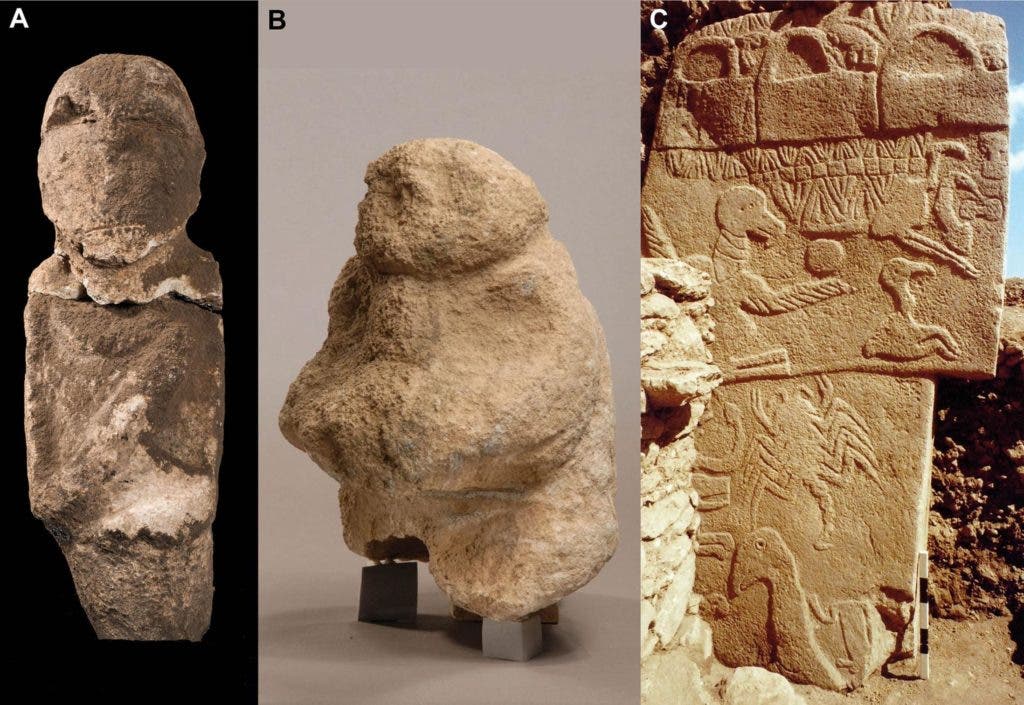
At the 12,000-year-old site of Göbekli Tepe, in southeastern Turkey, archaeologists unearthed three skull fragments cut with deep, purposeful linear grooves. This sort of skull alteration seems unique according to researchers at the German Archaeological Institute in Berlin who carefully analyzed the skulls with microscopes and found the markings were made deliberately.
Markings appear only on a couple of skull fragments dated between 10,000 and 7,000 years ago. These were likely etched with a flint tool. Strikingly, one of the skulls even featured a drilled hole resembling a technique used by the Naga people of India to hang the skull on a string. Occasional dabs of ochre suggest a ritualistic purpose. Julia Gresky, the lead author on the study and an anthropologist at the German Archaeological Institute in Berlin, thinks these grooved craniums indicate the people of Göbekli Tepe practiced a form of ‘skull cult’.
Skull cults — the veneration of the human skull after death — were quite common in Anatolia which lends credence to the hypothesis. She explains that it wasn’t uncommon at all for people to bury their loved ones, only to exhume them later to remove the skull and display them creatively. Elsewhere, other archaeological findings suggest some Neolithic communities would remodel the faces of the dead by applying plaster to skulls.
“As such, modified skull fragments from Göbekli Tepe could indicate a new, previously undocumented variation of skull cult in the Early Neolithic of Anatolia and the Levant,” the authors concluded in the journal Science Advances.
This might very well be the case with Göbekli Tepe, too, which was not a settlement but a site of worship fitted with monuments and temples. But can we be sure that the modifications are a sign of veneration of ancestors rather than a violation of enemies? Only more excavations will shed light on the matter. What’s certain is this wasn’t an easy job. Scrape marks where the muscles once attached to the bone suggest the priest or desecrator, depending on how you look at it, worked very hard to make these skulls tidy.
A good hint Gobekli people practiced some sort of skull cult is the one carving found on a pillar at the site which illustrates a human who has just lost their head. Figurines have also been found that look like they’re holding heads as gifts or look decapitated themselves. “They think the power from the dead is going to the living,” said Gresky.
The skull fragments were found in two trenches on a hilltop about 50km (30 miles) north of the Syrian border. The site of Göbekli Tepe (“Hill with a Navel”, or “Potbelly Hill”) is considered to be the earliest human structure, possibly a temple, dating back to 12,000 years ago. It was first discovered in 1963 during a surface survey of researchers from Istanbul and Chicago universities. Excavations at the site uncovered eight large oval buildings and two T-shaped massive pillars which resemble people, rising to more than 5 meters high. Smaller pillars of the same design were embedded in the walls.

Earlier in 2017, a team at the University of Edinburgh confirmed carvings on Göbekli Tepe stone pillars illustrate a swarm of comets that struck the Earth around 11,000BC. The event is correlated with a sudden fall in temperature during a period known as the Younger Dryas. Despite this resourcefulness, experts believe the people who first erected Göbekli Tepe were still hunter-gathers who had yet to domesticate plants or animals. Gresky and colleagues hypothesize that the transition from hunter-gather to farmers brought new challenges which could have favored rituals of the skull cult as a means of bolstering group identity.


